
When it comes to feeding your baby, choosing the right bottle can make all the difference. Whether you’re breastfeeding, bottle-feeding, or a combination of both, the right baby bottle will help your little one drink comfortably and enjoy their mealtime. With so many options on the market, it can feel overwhelming to find the best one for your unique situation. Let’s dive into the world of baby bottles, exploring the different types, features, and our top picks that can suit your baby’s needs.
Understanding Baby Bottles: What to Consider
Before we get into our recommendations, it’s essential to understand some key factors when choosing a baby bottle:
1. Material
Baby bottles come in various materials such as glass, plastic, and silicone. Here’s a closer look at each:
- Glass: Glass bottles are durable and free from toxins, making them a healthy option. However, they can be heavier and might break more easily than other materials.
- Plastic: Lightweight and unbreakable, plastic bottles are often more affordable and convenient for travel. However, be wary of BPA (bisphenol A) in some plastics — always choose BPA-free bottles for your baby’s safety.
- Silicone: This material is flexible and durable, making it less likely to break. Silicone bottles are also easy to clean, but they might not be as widely available in various sizes or designs.
2. Nipple Type
The nipple is a crucial part of the baby bottle. Different shapes, flow rates, and materials can affect how easily your baby feeds. Some nipple types to consider include:
- Wide-Base Nipples: These mimic the shape of a breast, making them a great option for breastfed babies transitioning to bottle-feeding.
- Variable Flow Nipples: These allow you to adjust the flow rate, making it easier to match your baby’s feeding preferences.
- Slow Flow Nipples: Perfect for newborns as they encourage a more natural feeding pace.
3. Size and Capacity
Baby bottles come in different sizes, typically ranging from 4 ounces to 8 ounces and even larger. It’s a good idea to have a variety of sizes as your baby grows. Smaller bottles are great for newborns, while larger options work well as they consume more milk.
4. Ease of Cleaning
The last thing you want to do is spend a significant amount of time cleaning bottle parts! Look for bottles with wide openings for easier access. Some bottles come with only a few parts to clean, which can be a real time-saver.
5. Anti-Colic Features
Many parents worry about gas and colic in infants. Look for bottles designed with venting systems that help reduce air intake during feeding. This can lead to a more comfortable tummy for your little one.
Top Baby Bottles Recommended for You
After considering all the factors mentioned, here are some of the best baby bottles on the market today:
1. Dr. Brown’s Original Bottles
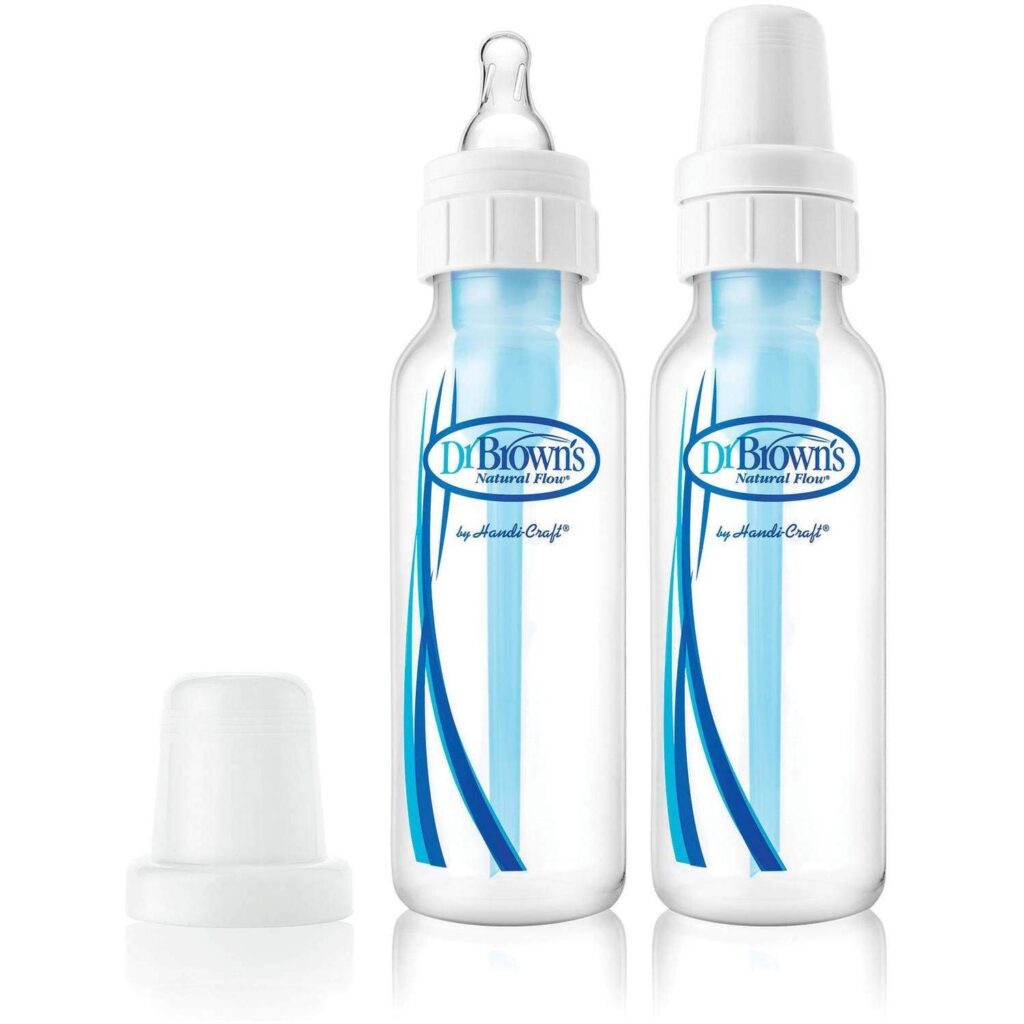
Dr. Brown’s bottles have a solid reputation thanks to their innovative internal vent system that reduces colic and allows for a more natural flow of milk. They’re designed to preserve nutrients and minimize oxidation, making them an excellent choice for both breastfed and formula-fed babies. They come in various sizes, making them helpful for various stages of growth.
Pros:
- Anti-colic design
- Preserves nutrients
Cons:
- More parts to clean
- Some parents find the vent system cumbersome
2. Comotomo Baby Bottles
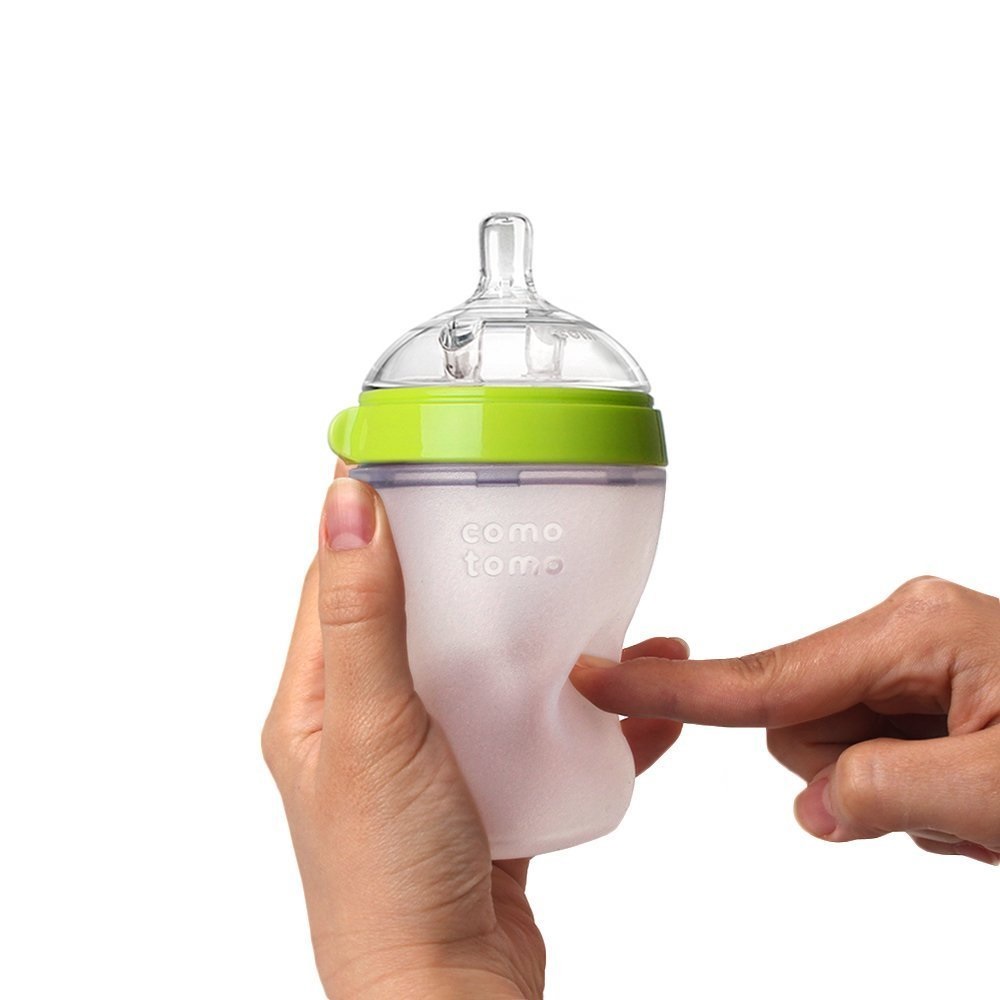
Known for their soft, squeezable body, Comotomo bottles are made from silicone, providing a natural feel in your baby’s hands. The wide base mimics a breast shape, allowing for an easier transition from breastfeeding to bottle-feeding. The dual anti-colic vents help reduce gas and discomfort for your baby.
Pros:
- Soft, breast-like feel
- Easy to clean due to wide neck
Cons:
- Can be more expensive
- Some babies may not prefer the silicone texture
3. Philips Avent Natural Baby Bottles
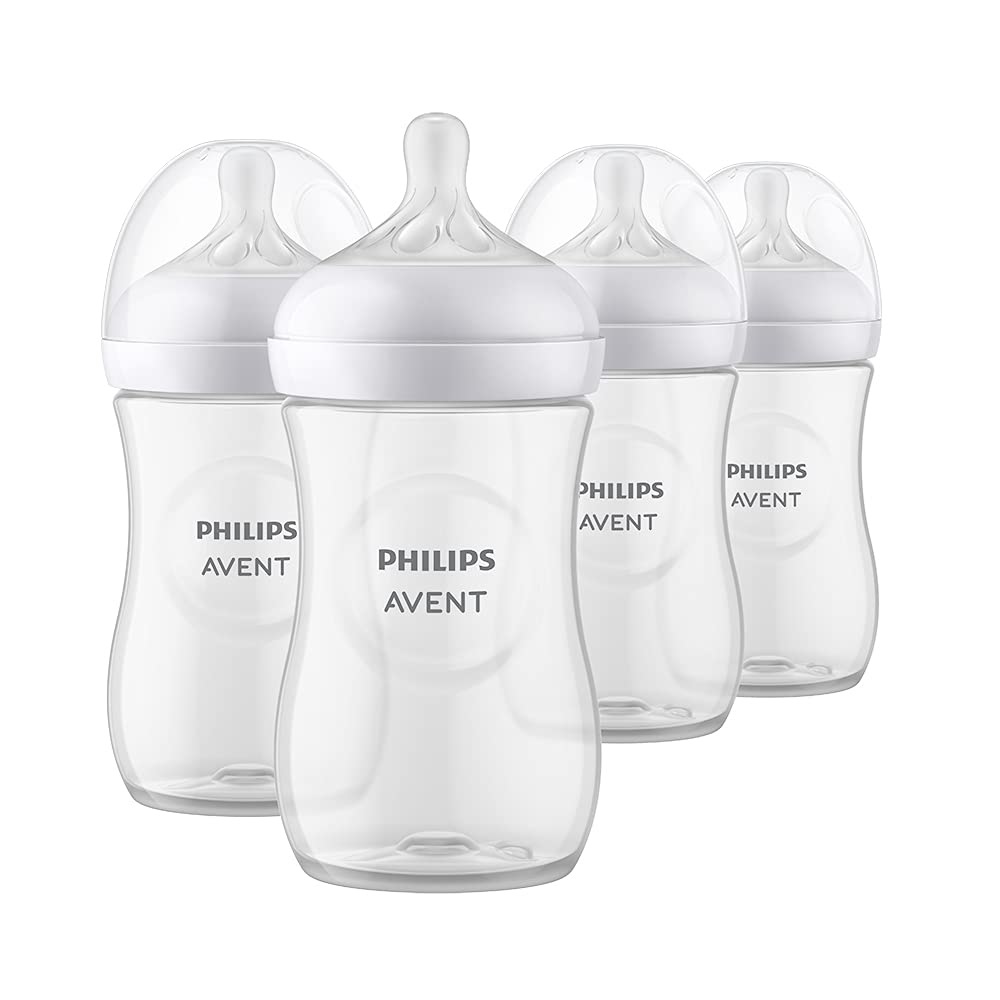
Philips Avent’s Natural bottles feature a unique wide nipple designed to closely resemble the breast, making them great for transitioning from breastfeeding. The anti-colic valve ensures that your baby swallows less air, promoting better tummy comfort. These bottles come in various sizes and are easy to clean.
Pros:
- Wide, breast-like nipple
- Good for transitioning between breast and bottle
Cons:
- Some parents report that the nipples can leak
- Limited flow options
4. MAM Easy Start Anti-Colic Bottle
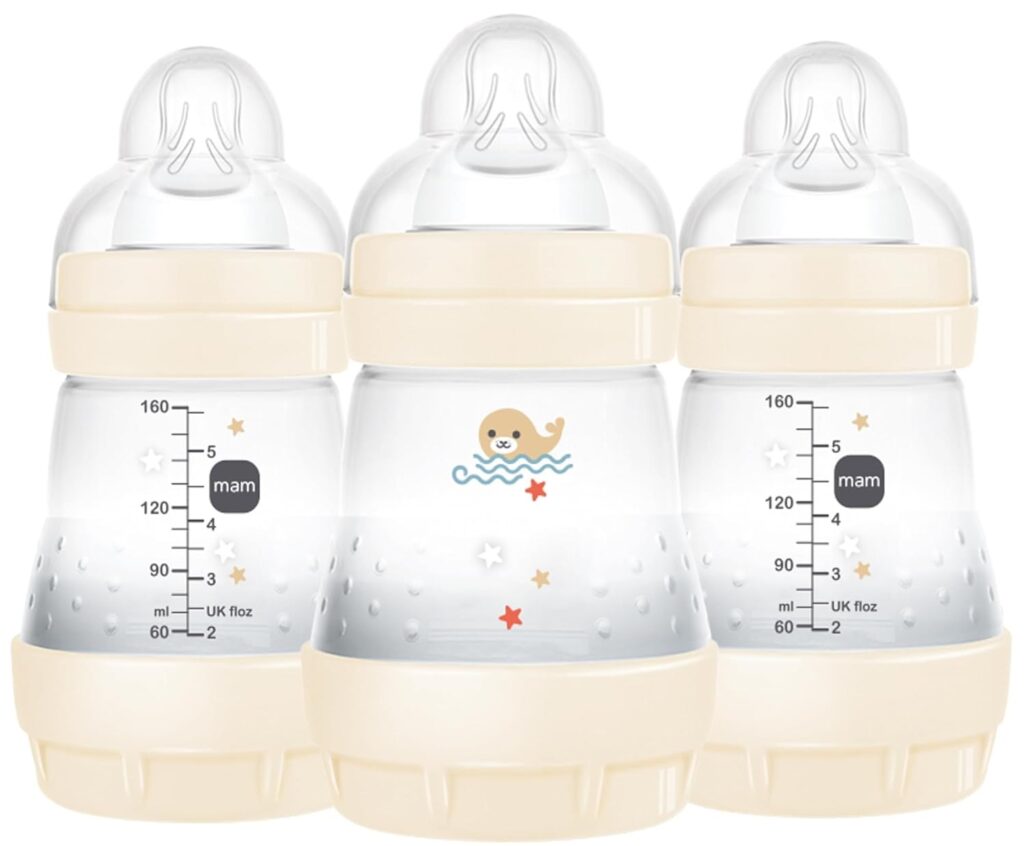
MAM bottles are designed specifically with newborns in mind. The anti-colic feature is a standout element, providing a smooth feeding experience. The bottle comes with a self-sterilizing feature, which is a game-changer for new parents on the go. They also feature a wide base for easy cleaning.
Pros:
- Self-sterilizing option for convenience
- Soft silicone nipple that babies love
Cons:
- Some parents feel the nipples collapse easily
- Limited availability in certain regions
5. Lifefactory Glass Baby Bottle With Silicone Sleeve
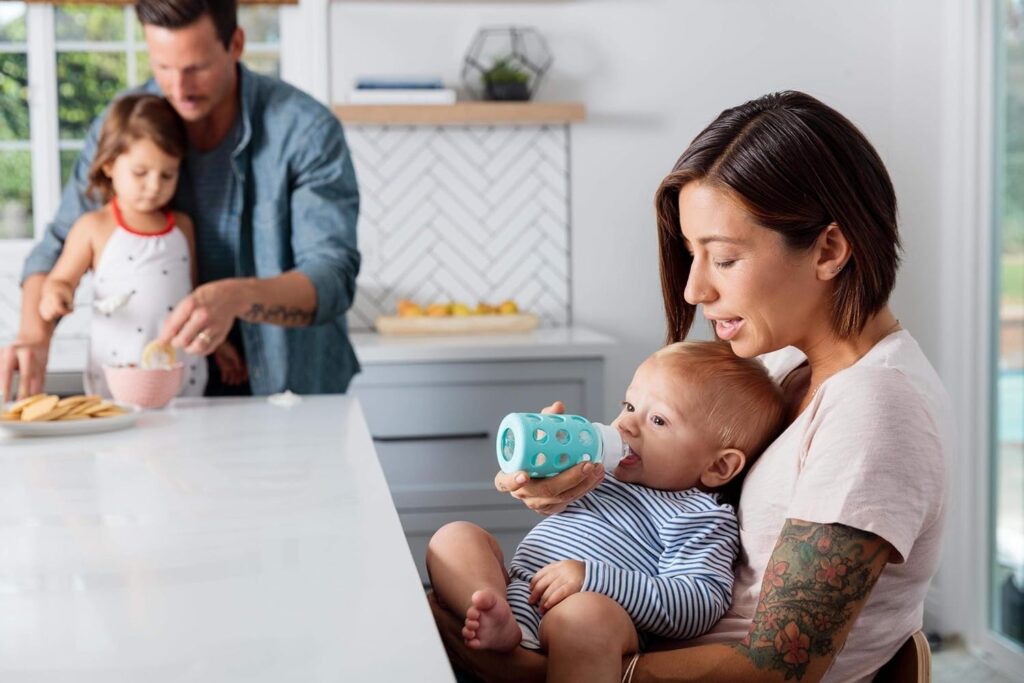
Lifefactory’s bottles combine the safety of glass with the protection of a silicone sleeve. This design prevents breakage while providing a soft grip. They’re easy to clean and safe to put in the dishwasher. They are a great choice for parents looking for a durable, toxin-free solution.
Pros:
- Eco-friendly option with glass
- Silicone sleeve prevents breakage
Cons:
- Heavier weight compared to plastic bottles
- Prone to warping in high heat
6. NUK Simply Natural Baby Bottle

Nuk has developed a special nipple that features multiple openings to provide a natural flow, similar to breastfeeding. The anti-colic design helps reduce gas and discomfort for your baby. These bottles are BPA-free and come in various sizes and designs.
Pros:
- Natural flow design mimics breastfeeding
- Good for reducing colic
Cons:
- Limited nipple sizes may not be ideal for all babies
- Higher price point
7. Avent Anti-Colic Baby Bottle with AirFree Vent

This bottle features a unique AirFree vent, allowing milk to flow without air intake. This helps prevent gas and discomfort during feeding. They’re easy to clean and offer a range of sizes as your baby grows.
Pros:
- Excellent anti-colic features
- Various size options available
Cons:
- Some parents may find it cumbersome to use
- Can be pricier than basic bottles
Tips for Using Baby Bottles
- Check for Temperature: Always test the bottle’s temperature before feeding. It should be warm, not hot!
- Cleaning: Follow the manufacturer’s cleaning instructions carefully. Many bottles can be washed in the dishwasher, while others may require hand washing.
- Introduce the Bottle Slowly: If you’re breastfeeding, try introducing the bottle when your baby is calm and not extremely hungry. This makes them less frustrated.
- Observe Your Baby: Pay attention to how your baby feeds. If they seem to be struggling, it may be time to try a different nipple type or bottle.
Conclusion
Finding the right baby bottle for your little one doesn’t have to be a daunting task. With many options available, understanding your baby’s needs and preferences will help you make the best choice. Take your time to try different brands and types, keeping an open mind as your baby grows and changes. Remember, what works for one baby might not work for another, and that’s perfectly okay!
At Jolly Babies, we aim to help you navigate this journey with confidence, ensuring that feeding time is a delightful experience for you and your little one. Wishing you all the best as you embark on your feeding adventure!
